Potassium in the Garden: [Use, Shortcomings, Advantages and Disadvantages]
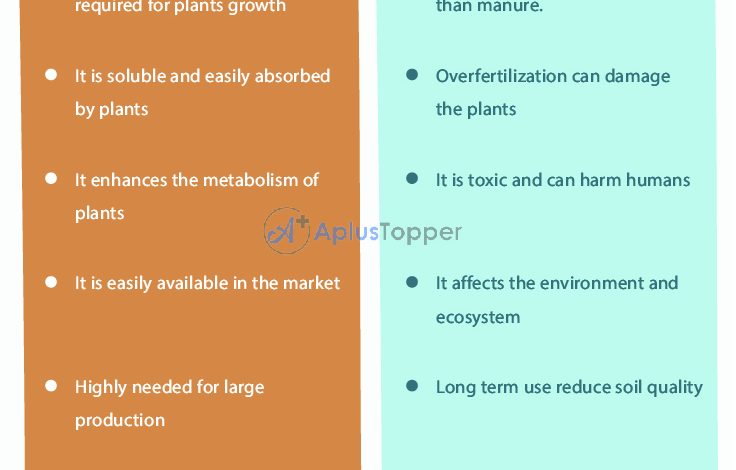
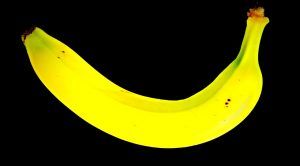 Potassium is the second most important macronutrient (after nitrogen) for plant health.
Potassium is the second most important macronutrient (after nitrogen) for plant health.
The correct levels within the structure of the plants are essential to advance in everything related to their proper development.
For this reason, it is necessary to pay close attention to the nutritional conditions and proceed with appropriate fertilization processes.
Do you know how you should work everything concerning this matter?
Do not worry about anything because here we tell you what you need to know.
What is potassium?
Potassium forms with nitrogen and phosphorus the three essential macronutrients to ensure that a crop presents optimal development conditions.
Plants need it a lot and are able to obtain it almost entirely from soil with good characteristics.
For this reason, potassium deficiencies are not very frequent unless crops are grown on poor soils.
It is an element that does not represent any problem at the level of toxicity for living beings or around the environment.
To recognize it in the chemical state, it is assigned the symbol K.
What factors influence crop response to potassium fertilization?
- Even when potassium levels in the soil are very good, there are different factors that play a determining role in its correct use.
- Moist soil will help plants improve their ability to take up potassium from the soil, as well as improve oxygen levels.
- On the other hand, carrying out soil removal and cleaning processes before planting will also help improve performance.
- Lastly, temperatures between 15 and 26º C are ideal for the roots to carry out their functions and to work better with the nutrients.
What is the potassium content in the soil?
The potassium available in the soil is highly variable depending on its quality.
It is necessary to know that there are four ways to find potassium in the soil: structural, soluble, exchangeable and fixed.
What plants have the opportunity to take is soluble potassium, which has a variable concentration between 0.1 and 1000 ppm.
Exchangeable potassium also plays a fundamental role in this whole issue as it is mobilized as the plant takes amounts from the soil.
What benefits can a soil rich in potassium have?
Plants that acquire a good level of potassium for their development have health and vitality advantages over others that are found in poor soils.
This is because this element is essential in a large number of processes such as:
- Photosynthesis, since potassium is in charge of regulating the activity of the stomata and, therefore, the absorption that the plant makes of carbon dioxide.
- It helps the amount of water in the plant to be at optimal levels, since it works from the moment the root begins to absorb it until it reaches the stomata and losses occur. In fact, when there are risks of hydric stress, potassium intervenes to improve tolerance.
- Potassium also acts in the processes of protein synthesis.
- It is a decisive agent in the activation of the enzyme that is responsible for synthesizing starch.
- It works on the activation of enzymes that are directly linked to the energy levels in the plant, as is the case with ATP, as well as those associated with growth.
What are the disadvantages of an excess of potassium?
Although it is very unlikely to occur, excess potassium can trigger some problems in the structure and health of plants.
- For example, it is an element capable of competing with calcium and magnesium, in both cases being a very sensitive issue because plants need them.
- It is most likely that excess potassium occurs due to poor planning in fertilization.
- If you suspect that this problem is occurring, it is best to carry out a soil study as a first step.
- It could also be very useful to advance with the study of the sap to determine exactly the elements present inside it.
- All this will help to adjust the fertilization processes so that they are suitable for the type of crop with which you are working.
What crops benefit most from the presence of potassium in the soil?
 There are many crops that need high levels of potassium in the soil to grow successfully.
There are many crops that need high levels of potassium in the soil to grow successfully.
Within these are fruits such as bananas, apples and strawberries. In the case of vegetables, cauliflower, potatoes and soybeans stand out.
How do we detect deficiency or lack of potassium in our crops?
Low levels of potassium as an essential plant nutrient trigger a series of symptoms that are mostly easily identifiable.
Here they can be mentioned:
- A reduction in the growth rate of the plant, since potassium works with the enzymes responsible for this function.
- Appearance of chlorosis in the newest leaves of the plant that can be seen with the passing of days as burns. This also leads to premature defoliation of the plant that will be much more accelerated in cases where there are high temperatures.
- The plant will become less resistant and this will affect its ability to adapt to naturally occurring temperature changes as well as water stress. But the most important thing about this point is that the attack of pests and diseases could seriously affect it.
- In the event that the plant produces a harvest, it will be seen with fruits that are very different from each other, both in size and in ripening time.
- The roots could be affected by not receiving adequate nutrients for their strengthening.
Caring for crops correctly is not about applying fertilization in any way, but about establishing a work plan according to their needs.
And that doesn’t just apply to ensuring good potassium levels, but to all other nutrients.
What can be a good source of potassium?
Typical sources include mined rock dusts and wood ash.
Of course, manures, compost, and other organic materials are also sources of potassium, because even though the concentration of potassium in them is quite low, a lot of material is usually applied to a field.
Compost
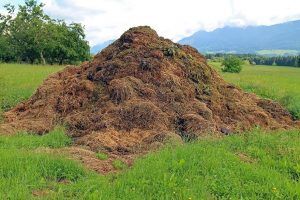 Homemade organic matter like compost is packed with nutrients, including potassium, especially if it’s fortified with banana peels and other fruit and vegetable waste.
Homemade organic matter like compost is packed with nutrients, including potassium, especially if it’s fortified with banana peels and other fruit and vegetable waste.
Potassium compounds in compost are water soluble, making them readily available to plants, but they are also likely to leach out of your compost pile over time.
wood ash
The original source of «potassium» fertilizers, hardwood ashes can be used directly as fertilizer or added to your compost pile to increase the potassium content.
Wood ash also increases the pH of the soil, so be sure to regularly test your soil to make sure it stays balanced.
algae food
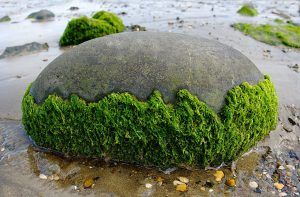 Available dry or liquid, seaweeds offer potassium to the soil in a fairly rapid release form.
Available dry or liquid, seaweeds offer potassium to the soil in a fairly rapid release form.
green sand
It is mined from ancient seabeds and is rich in various minerals, including potassium. It is used as a fertilizer and soil conditioner, or can be mixed with compost.
Potassium chloride
Extracted from ancient deposits, this commercially available product can be used as a natural source of potassium, although the chlorine found in it can harm soil microbes.
Potassium sulfate
Potassium sulfate is more expensive than potassium chloride but safer as it contains no chlorine.
Not all potash products are considered organic, so make sure the product you use is approved by the Organic Materials Review Institute (OMRI).
Sul-Po-Mag
A variation of potash, Sul-Po-Mag is actually a naturally occurring mineral called langbeinite (potassium magnesia sulfate).
Sul-Po-Mag is water soluble and convenient, although it should not be used unless your soil also needs sulfur and/or magnesium.
granite powder
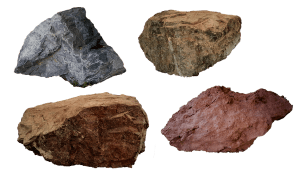 Available from granite quarries, granite dust is a relatively inexpensive way to add potassium and minerals to the soil. As it is ground rock, this product is very slow to release its minerals and is not a quick fix.
Available from granite quarries, granite dust is a relatively inexpensive way to add potassium and minerals to the soil. As it is ground rock, this product is very slow to release its minerals and is not a quick fix.
Potassium levels in the soil
As rocks break down into the sand, silt, and clay particles that form soil, potassium and other elements are released and become available to plants.
The behavior of potassium in the soil is related to the type and amount of clay and organic matter. The type of clay depends on the parent rock, igneous or sedimentary, and to the extent that the mineral particles have undergone changes (weathering) over the millennia.
Clay-sized particles can be represented as being made up of many layers, each composed of interlocking silicon and oxygen.
Relatively unavailable potassium
Between 90 and 98% of the total potassium present in soils is found in insoluble primary minerals that are resistant to chemical decomposition.
They release potassium slowly, but in small amounts compared to the total needs of growing crops.
Slowly available potassium
This form constitutes between 1 and 10% of the total potassium supply, and can originate from dissolved primary minerals or potassium fertilizers.
This potassium is attracted to the surface of the clay minerals, where it can be firmly bound or fixed between the clay layers in a slowly available form for plants. The actual amount available depends on the type and amount of clay present.
readily available potassium
Readily available forms of potassium constitute only 0.1 to 2 percent of total soil potassium, consisting of potassium dissolved in the soil solution and held in the exchange positions of clay and organic matter.
This potassium is «exchangeable» because it can be replaced by other positively charged ions (cations) such as hydrogen, calcium, and magnesium.
This exchange occurs quickly and frequently. Potassium from the soil solution can be taken up by the plant or lost from the soil by leaching, especially in coarse-textured sandy soils.
Sources and references
- http://www.fagro.edu.uy/fertilidad/curso/docs/Potasio.pdf
- https://www.researchgate.net/profile/Ignacio-Lazcano-Ferrat/publication/238736443_EL_POTASIO_Y_EL_CONCEPTO_DE_LA_FERTILIZACION_BALANCEADA/links/56e32cb108ae65dd4cbac2f9/EL-POTASIO-Y-EL-CONCEPTO-DE-LA-FERTILIZACION-BALANCEADA.pdf
- https://inia.prodigioconsultores.com/bitstream/handle/123456789/4355/NR37822.pdf?sequence=1
- http://cbta178.edu.mx/BIBLIOTECA/admin/archivos/6_Manual-Agricultura-Eco.pdf

![Photo of Kalanchoe cuttings: [Grafting, Season, Rooting and Sowing]](https://www.complete-gardening.com/wp-content/uploads/2021/06/Esquejes-de-Kalanchoe-390x220.jpg)
![Photo of Cayenne: [Cultivation, Irrigation, Associations, Pests and Diseases]](https://www.complete-gardening.com/wp-content/uploads/2022/08/cayenne-cultivation-irrigation-associations-pests-and-diseases-390x220.jpg)

